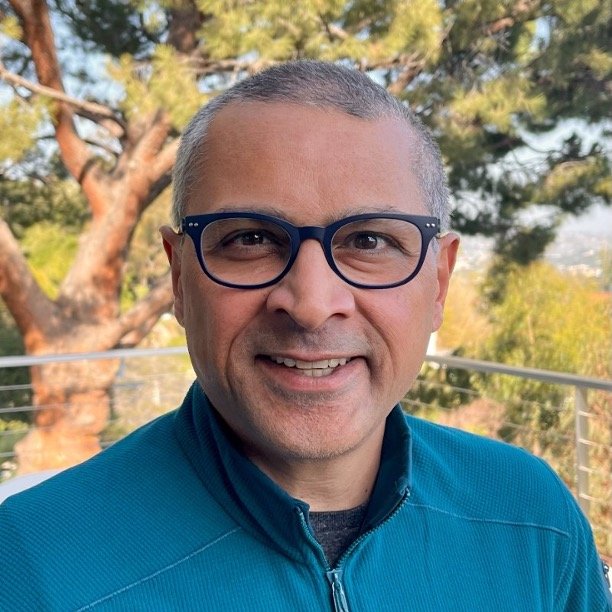Innovator Spotlight: Diku Mandavia, MD
Diku Mandavia, MD, Chief Medical Officer at BrainScope, has long been a pioneer and successful innovator in emergency medicine.
“In 1991 I came to LA County Hospital to train in emergency medicine,” Mandavia said. “I thought I was coming to a hospital. It was more like a MASH unit.”
Figure 1. “In 1991 I came to LA County Hospital to train in emergency medicine,” Mandavia said. “I thought I was coming to a hospital. It was more like a MASH unit.”
Mandavia explained that at the time of his training, “the CT scanner was on the third floor and three football fields away. It was very frustrating, because we had a lot of patients that would die in CT. We had a lot of penetrating heart injuries and we had no way to diagnose tamponade.”
Fortunately, a new technology emerged that revolutionized care for these patients. Mandavia said, “one day somebody rolled in a new ultrasound. Ultrasounds at that time were the size of your kitchen fridge. But this one was ‘miniature’. This was the size of a dishwasher.” By using the new smaller ultrasound on trauma patients, Mandavia and his colleagues were able to identify cases of pericardial tamponade and rapidly treat patients. “It was a complete light bulb moment,” Mandavia said. “So I, as a resident, started pushing around this dishwasher, and started learning ultrasound.”
From this lightbulb moment, Mandavia pushed for emergency physicians to be trained in ultrasound. As a new program director, he mandated ultrasound training at his residency program and eventually co-founded the ACEP Ultrasound Section. But getting emergency physicians to endorse and adopt ultrasound in the ED was not easy. Mandavia said, “’I would hear from other emergency colleagues, ‘Why the hell would you be doing ultrasound? You're not a radiologist.’ You had to hear that all day long.”
Around the same time, Sonosite had developed a miniaturized ultrasound machine intended for non-radiologist use for point of care use in the battlefield. Realizing that point of care ultrasound use could be more effectively scaled through industry partnership, Mandavia joined Sonosite, eventually becoming its Chief Medical Officer (CMO). Sonosite would later be acquired by a much larger company, FUJIFILM and Mandavia would eventually ascend to the role of CMO at FUJIFILM Medical USA.
“I learned a lot of what it meant to work in industry - it’s important for companies developing innovation to know how to change physician behavior, that adoption is the key to improving patient care,” Mandavia said.
After a short time with Ceribell, a point of care EEG startup company, Mandavia joined BrainScope as CMO.
BrainScope is an early-stage company whose point of care device uses artificial intelligence (AI) to interpret qEEG readings for minor head injury. Mandavia said, “At BrainScope, we have developed breakthrough technology that can rule out a bleed, in a GCS 15 patient, and simultaneously assess concussion. That's an industry first and a game changer for head injury workup. In our health system pilots, we are consistently showing a 40-60% decrease in CT usage which has resulted in a 58% decrease in ED length of stay. Our technology is particularly well suited for our current post-pandemic environment with overall staff shortages, decreased radiology backup and simultaneous surges in ED patient volume.”
Figure 2. BrainScope’s innovative neurotechnology platform uses EEG-based, AI-derived algorithms empowering physicians to quickly make accurate head injury assessments. Re-printed with permission from www.brainscope.com/about
Mandavia noted that, despite common clinical decision rules, the workup for head injury really has not changed since the 1980s as the main decision is whether or not to get a CT scan of the head. BrainScope disrupts this approach by accurately ruling out brain bleeds and assessing concussions based on qEEG signals obtained through a limited set of electrodes. Also, this approach avoids radiation or blood draws.
Just as BrainScope is leveraging Artificial Intelligence (AI) capabilities to perform tasks that emergency physicians are not normally trained to complete, Mandavia is optimistic about additional uses of AI in healthcare and recommends physicians become literate in AI. “You're going to have to see how the AI models were developed,” Mandavia said. “And that's why you're going to need to understand a little bit about AI methodology. Just like you critically review the literature, right? You're taught that in residency. Well, we should be knowledgeable about how AI models are generated, because you're going to see more and more of that in the literature.”
As startups and other companies continue to leverage AI and innovative technologies, Mandavia recommended engaging with and learning from them. There has traditionally been some bias against physicians working with industry. Mandavia said, “The reality is most technological innovation comes through a collaborative approach. As an example, I am very thankful to the physicians involved with industry to bring us mRNA vaccines. We need to think differently to drive innovation in medicine.”
“If you don’t have any conflicts of interest, you’re probably not doing anything interesting,” Mandavia said. “If we do the same things we've done for the last 20 years for the next 20, as a society our healthcare system will collapse.”
Finally, Mandavia stressed the importance of mentorship and learning from innovative peers. “I think it's groups like EMIC that show how could we support the young physicians in providing that exposure. We need this new generation to learn and leverage the latest technologies to develop new care pathways for patients.”
Learn more about Brainscope at https://www.brainscope.com/
Interested in reaching out to Dr. Mandavia and other innovators in EM? Join us at the EM Innovation collaborative at https://www.eminnovationcollaborative.org/?msopen=/member/sign_in


